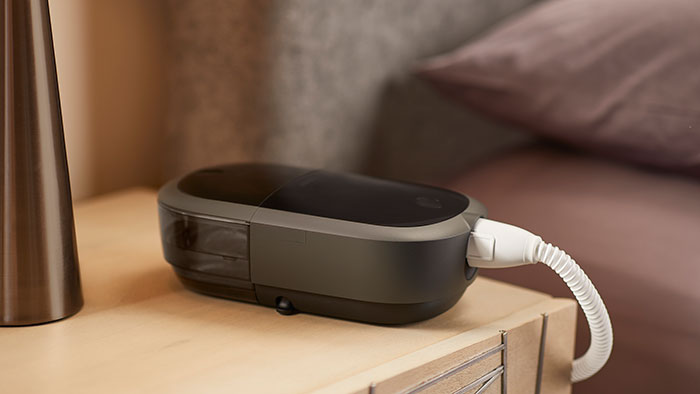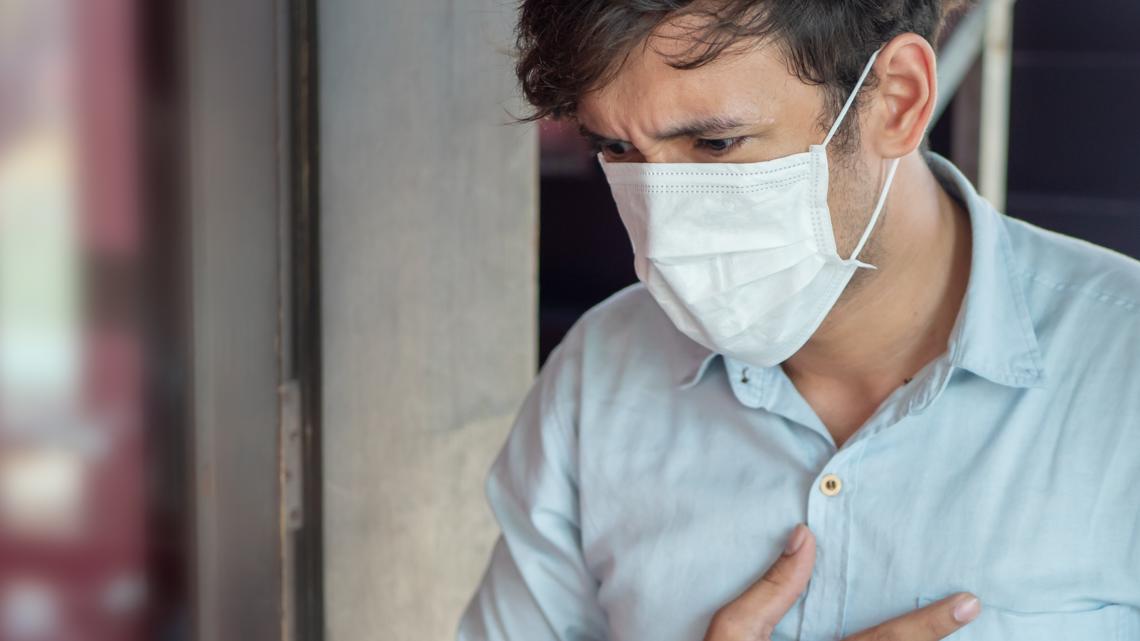Explainer on foam used in DreamStation 2 and other devices

FAQs
What material is used for sound abatement in the DreamStation 2 and other replacement devices?
The repaired and new replacement sleep therapy devices all contain silicone sound abatement foam. Silicone is a widely applied rubber-like material that is used in many applications of daily life, such as bakeware for cupcakes, and also in medical applications, including sleep therapy devices. This includes sleep therapy devices manufactured by other companies.
What is the status of the testing on the silicone foam that FDA requested?
Silicone foam volatile organic compound testing as requested by FDA in November 2021 (i.e. device testing according to ISO 18562-3) has been completed. The final reports were submitted to FDA in August 2022. Philips Respironics has received no comments on that testing from FDA to date.
What is volatile organic compound testing on devices testing according to ISO 18562-3?
The purpose of such a test is to determine if a detected and quantified volatile organic compound is likely to be associated with a toxicological risk based upon exposure during use of the device. This testing is performed on the entire device, not just the sound abatement foam component. ISO 18562-3 ‘Biocompatibility evaluation of breathing gas pathways in healthcare applications – Part 3: Tests for emissions of volatile organic compounds’ is the FDA recognized standard to conduct such tests.
These are very sensitive measurements, because the concentrations that are measured during such tests are typically in the range of µg/m3, or one millionth of a gram of a volatile organic compound per one thousand liters of air that is emitted by the device.
The silicone sound abatement foam used by Philips Respironics in the replacement devices has been shown in some tests to emit chemicals, including formaldehyde. Can you explain this?
The levels of formaldehyde detected in all devices that contain silicone sound abatement foam were well below the formaldehyde limit established by the World Health Organization, a global public health authority. Additionally, the levels detected were even further below the more recent formaldehyde limit established in 2023 by FDA, as well as other medical authorities.
In this respect, it is important to distinguish between a hazard, which is something that – at certain levels – has the potential to cause harm, and risk, which is the likelihood that a hazard will cause harm. For example, acetone is a common chemical found in plastics and specifically in nail polish remover. Hazards associated with acetone include skin irritation, dizziness, etc., but acetone is not a risk under normal exposures. Similarly, formaldehyde is omnipresent in daily life. It is present in the human body, certain food (e.g., pears, cauliflower), cardboard, carpeting, etc. Formaldehyde can be a hazard, but it is not considered to be a risk when the exposure levels are below the applicable regulatory limits.
The determination of chemical levels and safety is not made by Philips Respironics but by the testing laboratories per FDA recognized standards. The general process is:
- Chemical identification (what chemicals are present)
- Chemical toxicological characterization (what is the toxicological limit of the identified chemical)
- Exposure assessment (how much chemical is emitted by the device)
- Risk characterization (is the amount of the chemical below its toxicological limit)
Were any changes made to the silicone foam as a result of testing?
No. Philips Respironics’ devices with silicone sound abatement foam have been subject to extensive testing in accordance with the applicable industry testing standards, and Philips Respironics has not identified any safety issues.
The comprehensive testing and research program also includes an in-depth review and reassessment of data and toxicological risk assessments done prior to June 2021. This included a review of the single volatile organic compound test of a Philips Respironics A Series device containing silicone foam, which was referenced in the November 2021 FDA Form-483 for a Philips Respironics site. The detected volatile organic compounds were below the applicable FDA and WHO regulatory limits.
Why did Philips Respironics propose a threshold to the test labs for testing for the formaldehyde inhalation exposure limit?
Philips Respironics is conducting testing at multiple laboratories, and harmonization of regulatory limits is critical for interpretation across these laboratories. The harmonization of regulatory limits is best practice and consistent with medical regulatory authorities’ practices.
For example, regulatory medical authorities, including the US FDA and the European EMA (European Medicines Agency) harmonized with a single ICH (The International Council for Harmonisation of Technical Requirements for Pharmaceuticals for Human Use) guidance document that has inhalation thresholds for various chemicals, including formaldehyde.
The limit that was proposed to the test labs is the World Health Organization (WHO) limit for formaldehyde. It was not a limit created or derived by Philips Respironics. The harmonization of formaldehyde to the WHO limit (100 µg/m3) was conservative and protective for patients, as the FDA has recently released (July 2023) its own internationally harmonized formaldehyde limit that is more than two times higher than the WHO limit.
The July 2023 FDA guidance on ‘M7(R2) Addendum: Application of the Principles of the ICH M7 Guidance to Calculation of Compound Specific Acceptable Intakes’ can be accessed via this link. Similarly, the July 2023 EMA guidance on ICH M7(R2) Addendum on application of the principles of the ICH M7 guideline to calculation of compound-specific acceptable intakes’, can be accessed via this link. The FDA/EMA limit for formaldehyde is 8,000 µg/day or 215 ppb / 264 µg/m3.
What is the status of the repair and replacement program to date? If there were delays, what caused them?
The CPAP and BiPAP sleep therapy devices represent most of the devices under the recall. To date, 99% of the sleep therapy device registrations globally that are complete and actionable have been remediated. The remediation of affected ventilators remains ongoing in coordination with the relevant competent authorities.
The repair and replacement program, which involves up to 5.6 million devices, is an undertaking of significant scale. In an average year, Philips Respironics produces and distributes around one million sleep devices. The increase of the production capacity was impacted by the supply chain challenges in 2021/2022, such as component and freight capacity shortages. Nevertheless, Philips Respironics was able to increase the production capacity by more than a factor of three.
Customers have complained about getting refurbished machines that were missing parts. Can you explain?
The Philips Respironics CPAP patient population related to the recall* covered several versions of our CPAP platforms. To optimize matching speed and the best possible option to transition the patient to a replacement device, the repaired or new replacement device the patient received came in a variation of configurations.
In certain cases, to enable the easiest and most familiar replacement option, we delivered a CPAP main blower motor module that would work with their existing humidifier and power cord supply; in other situations, the needs of the patient were best served by delivering a complete set-up including the blower motor along with compatible humidifier and other accessories.
Did Philips Respironics submit the complaints related to thermal issues with DreamStation 2 devices to the FDA?
Philips Respironics is in discussions with the FDA regarding the reports it filed with the FDA related to possible thermal issues in the humidifier of the DreamStation 2 sleep therapy device while in use. To be clear, this matter is not related to the silicone sound abatement foam.
Philips Respironics filed these approximately 270 reports over the last three months which cover a three-year period following a retrospective review of possible thermal complaints related to DreamStation 2 since the launch of the product.
The FDA has issued a safety communication on this matter: Carefully Monitor Philips DreamStation 2 CPAP Machines for Signs of Overheating: FDA Safety Communication | FDA.
Philips Respironics conducted a review and analysis regarding reports of the possible thermal issues in accordance with its regulatory processes. The devices can continue to be used provided that the safety instructions in the instructions for use for the DreamStation 2 sleep therapy device are followed.
link





